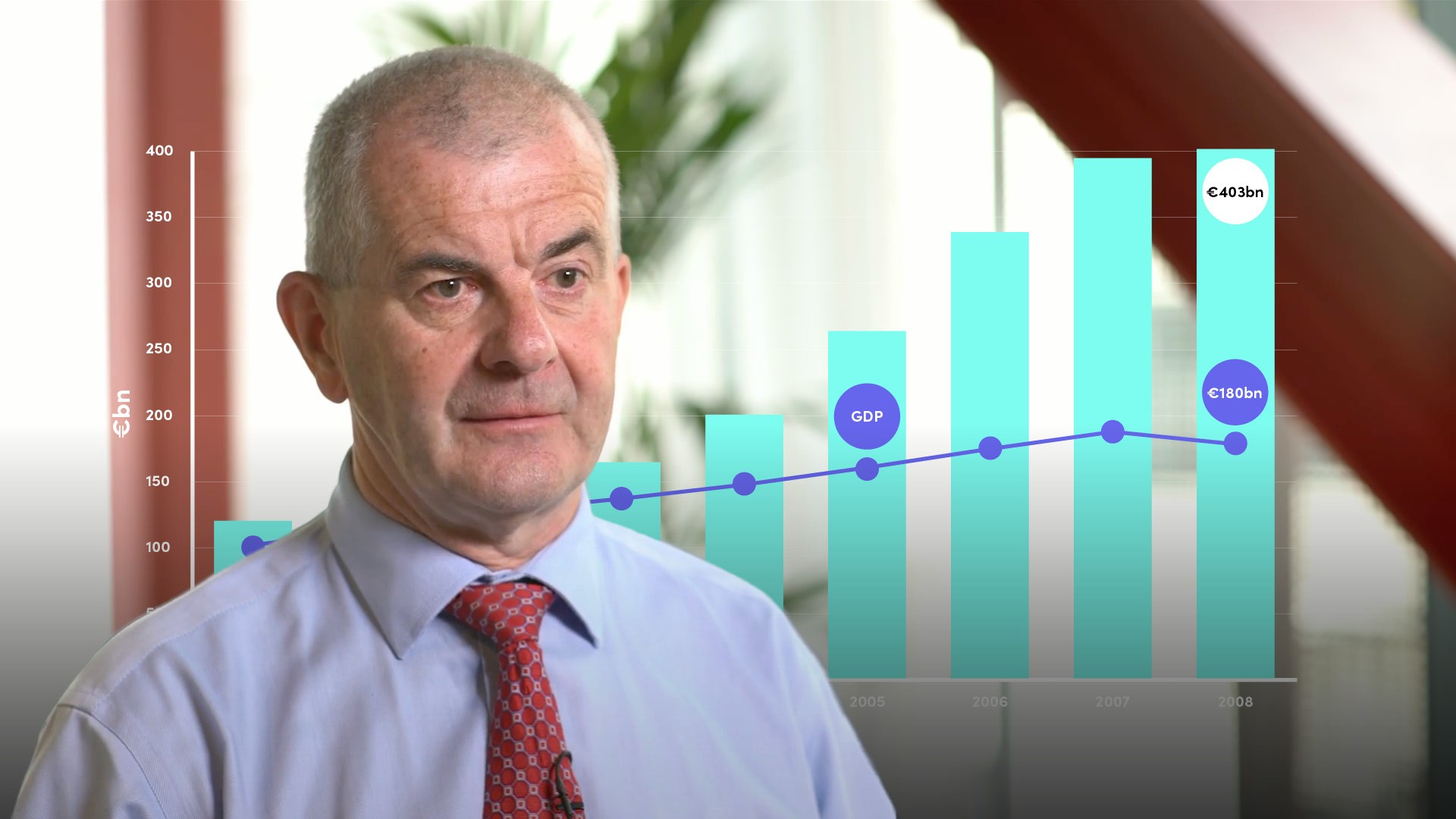
Background to the Irish Financial Crisis

Michael Torpey
30 years: Treasury & banking
Michael introduces his series on the Irish financial crisis, starting a decade prior. He provides an account of Ireland's monetary and fiscal policies and the country's movement towards the single currency.
Michael introduces his series on the Irish financial crisis, starting a decade prior. He provides an account of Ireland's monetary and fiscal policies and the country's movement towards the single currency.

Background to the Irish Financial Crisis
13 mins 10 secs
Key learning objectives:
Explain the impact of Ireland’s monetary policy and single currency on putting Ireland into a vulnerable position before the crisis
Describe the level of regulation on Irish banks
Explain how Ireland’s fiscal policy impacted its position pre-crisis and whether the vulnerability was perceived at the time
Overview:
Ireland was particularly vulnerable when the global financial crisis struck. The level of vulnerability was largely due to the low interest rates, the pro-cyclical fiscal policy, excessive borrowing by banks from the international debt market, light regulation and the government tax policies.
How did monetary policy impact the vulnerability of Ireland before the crisis?
In short, Ireland’s monetary policy was flawed as there were low interest rates which were out of line with the economic cycle.
In the mid-1990s Ireland was booming, after a protracted period of poor economic performance. The pace of economic growth led the Irish Central Bank to raise official interest rates by 0.50% in May 1997. This move was a break from the seemingly inevitable downward path of rates as Ireland approached the start of the Euro single currency.
This move was a very important message for the Irish economy: there could be no certainty that interest rates would in the future be appropriate to or move in line with the needs of the Irish economy. In the single currency, in the Euro, Ireland would be a price taker in terms of interest rates.
By 1999, Ireland was now part of a single currency and continued to enjoy a booming economy fuelled by rapid credit growth.
How did a single currency impact the vulnerability of Ireland before the crisis?
As part of the single currency, Ireland had unprecedented access to foreign debt. Irish banks borrowed internationally like never before.
There was an explosion in credit funded from sources other than deposits from 1999 onwards when Ireland became part of the single currency.
The growth in credit was dramatic, it was particularly visible in the Irish Residential Mortgage market - about twice the normal demand level and house prices had risen fourfold in a 12-year period.
How were the banks regulated?
Regulatory intervention in the Irish banking system was minimal. Although light-touch regulation was the norm internationally, there are those who would say that Ireland took this approach to a greater degree.
Macro-financial vulnerabilities were underestimated and were not available to policy-makers in a timely manner.
How did Ireland’s fiscal policy impact the crisis?
A pro-cyclical and pro-property tax system added to the build-up of property price pressures in the Irish system.
The reality is that fiscal policies were pro-cyclical in most years running up to the financial crisis, including 2007. Government spending rose faster than nominal GDP in every year except one between 2001 and the crisis. At the same time, tax revenues had shifted to cyclical taxes such as corporation tax, stamp duties and capital gains tax.
This large cyclical element in tax revenues hid the structural fiscal issue that was there. It also left the fiscal position very vulnerable to the impacts of a recession. And on top of all of that, the tax system favoured property both through a system of tax reliefs for property investment and the absence of any meaningful property tax.
Did anybody anticipate the crash?
There was an increasing recognition that the housing market was growing at an unsustainable pace. There was a consensus that it would slow down, but at the same time there was a widespread view that we would have a so-called ‘soft landing’.
The reality was that Ireland had built a housing stock on a false premise, often in locations where the population potential was never likely to need this volume of housing.
In retrospect, it seems that it was just too difficult to push against the group-think that pervaded the system.

Michael Torpey
There are no available Videos from "Michael Torpey"

